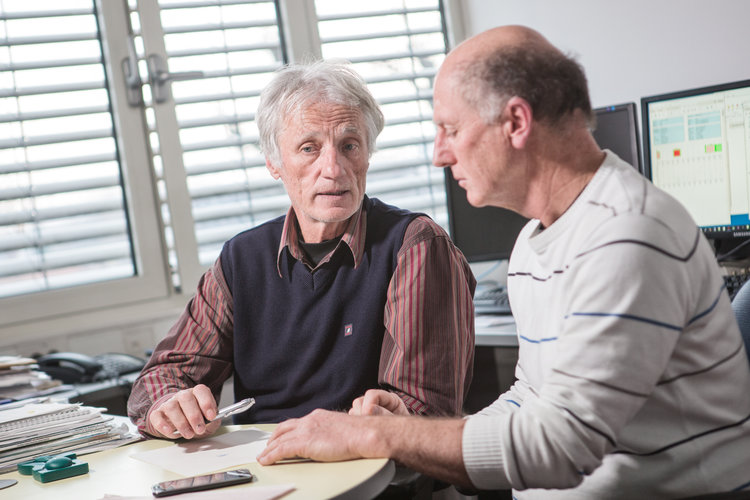“Just because your solution solves a real problem, it won’t necessarily be successful on the market”
When the company Saving partnered with the Josef Stefan Institute to take over commercialization of an innovative ECG monitor, the entrepreneurs assumed they have a relatively easy job ahead of them. They had a high-quality product designed by top researchers, addressing a serious medical need. Heart arrhythmias can cause stroke, and the current diagnostic method for detection is a so-called Holter monitor, for a 24-hour ECG monitoring during an individual’s activities. Holter monitoring is ordered by cardiologists, and since cardiologists are accessible through a referral by primary physicians, patients face long waiting times from the moment they detect problems, to the moment a cardiologist sees them. Further on, heart arrhythmias are irregular, and might not occur during the 24-hour monitoring. SAVVY ECG is a convenient wearable monitor filling this diagnostic void because it offers several days long continuous monitoring, which can detect heart problems in patients Holter monitoring would miss.

As many new healthcare entrepreneurs learn quickly, it takes more than having a good solution to be successful in the healthcare market. Patients are not ordinary consumers. Hence instead of addressing patients directly, the SAVVY ECG team decided to target primary care physicians. By using SAVVY ECG, primary care doctors can improve their diagnostic capabilities when deciding which patient to send to cardiologists. SAVVY ECG team’s vision is to significantly decrease the percentage of people suffering from stroke due to undetected heart arrhythmia, says strategic development and sales consultant at Saving d.o.o. Marino M. Samardžija.
Researchers from the Jozef Stefan Institute developed SAVVY ECG. When did Saving enter the story?
The researchers at the institute designed the innovative, easy to use water-resistant wearable ECG enabling accurate continuous heart monitoring. To push the product in real-world use, the institute began searching for a business partner. This is where we stepped in. SAVVY ECG is owned by Saving – the founder of the Institute for regenerative medicine and e-medicine – Medical center Mirje. We recognized a mutual interest and started collaborating.
In 2017, the research team at IJS, Saving, and L-tek were awarded Puhar special achievement award for an important achievement in the field of medical equipment.
The award was a recognition of a successful transfer of scientific work to the real world. More often than not, research projects stay in the lab. SAVVY ECG on the other hand, already has a significant positive effect on patients with heart arrhythmias and potentially hidden atrial fibrillation.
Who uses SAVVY ECG?
More than ten primary healthcare centers in Slovenia bought SAVVY ECG so far. But most of the sold devices went abroad since the product is available directly to consumers.
Atrial fibrillation is common in older patient populations. Older patients are usually less aware of the latest technological advancements in digital health. How do you get the information about SAVVY ECG to your targeted customers?

To answer this question, we need to go back to the business model for the product. At the beginning of the commercialization process, we assumed that addressing an unmet medical need will suffice for successful sales of SAVVY ECG. The current diagnostic process of heart arrhythmias is problematic, since arrhythmias don’t have a permanent pattern, and can stay undetected during the doctor’s visit. It turned out that having a solution to the problem alone is not enough to convince worried individuals to purchase the product. We then started working with primary doctors. SAVVY ECG is a water-resistant wearable device. Patients can take it home, wear it for a week and record arrhythmias when they occur. The report gives their doctors a better picture of their situation, which eases the doctor’s decision for referral of a patient to the cardiologist.
Does this mean the ECG device is a cost of community healthcare centers or is SAVVY ECG already in the health insurance payment system?
The device is a cost of community healthcare centers, but they can charge for tests done with SAVVY ECG through the existing payment models which in the end covers the cost of the device and the cost of the diagnostics procedure.
In 2018 Apple released an iWatch with an ECG monitor. Apple’s vision is to detect more patients with atrial fibrillation. Does that worry you in terms of competition? Apple is hard to compete with and they released a clinical study with 400.000 participants in 2019.
Heart arrhythmias detection is a burdening global challenge from the investment side and technological complexity. The entrance of Apple in the ring only confirms that. Nevertheless, Apple still has a lot of work to do. Despite their capital and investment power, I believe that in the end they will buy the best solution. The strong technological reputation Apple possesses, is not in itself a guarantee for a real-world clinical impact of their device.
We do not consider the new Apple watch as a competitive product, because at least currently, iWatch still has a lot of shortcomings. One of the critical issues is that the watch records too many false positive results, causing a lot of frustration by doctors that need to treat patients without serious needs for medical attention. Additionally, the amount of results doctors receive from the Apple watch users is overwhelming and challenging to analyze. SAVVY ECG is available to any consumer interested in the product, but because our core focus is collaboration with community care centers, SAVVY ECG reaches more targeted patients with an actual need for continuous ECG monitoring.
What challenges are you facing in scaling and growth?

Our current most significant challenge is attracting capital to finalize our development. The biggest problem in scaling SAVVY ECG among primary care doctors is the limited buying power of community care centers. To circumvent that problem, we’re changing the business model for SAVVY ECG from a one-time purchase to a subscription-based device renting model.
On a broader scale, to increase the detection of atrial fibrillation with SAVVY ECG, we would need a systemic approach supported by the Health Insurance Institute. 30% of strokes are cryptogenic, which means their cause is unknown. At least 20% of these are a consequence of atrial fibrillation. The treatment of AF in Slovenia costs the healthcare system 20 million euros yearly. Our challenge and vision are to decrease the percentage of cryptogenic strokes to 2-3%.
The vision for SAVVY ECG is to make Slovenia the first country without patients with undiagnosed heart arrhythmias. How are you progressing towards this goal?
We are currently present in over ten community healthcare centers, among which is the largest one – Community Health Center Ljubljana, which has already tested the product in its pilot phases. We are covering four crucial criteria that could help speed adoption: measurements with SAVVY ECG cost less than they get paid for by the insurance, the solution has a reasonable price, monitoring data analysis is relatively easy and possible during the patient’s visit at the doctor’s office. Furthermore, using SAVVY ECG does not change existing workflows on the primary level. The entrance to the market is demanding, but we’re motivated by our vision to decrease the number of cryptogenic strokes.
Article Source: http://www.healthday.si/novice-news/2019/8/28/digitalni-merilec-savvy-ekg-za-zgodnje-odkrivanje-srnih-aritmij#english
